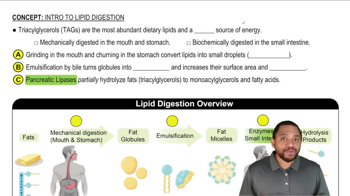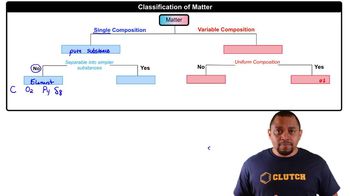Name the metabolic substrate(s) that can be produced from the carbon atoms of each of the following amino acids:
c. valine
 Verified step by step guidance
Verified step by step guidance



Name the metabolic substrate(s) that can be produced from the carbon atoms of each of the following amino acids:
c. valine
Name the metabolic substrate(s) that can be produced from the carbon atoms of each of the following amino acids:
c. cysteine
Name the location in the cell where the following catabolic processes take place:
c. β oxidation
Identify the type of food—carbohydrate, fat, or protein—that gives each of the following digestion products:
d. glycerol
If glycolysis occurs in the cytoplasm and the citric acid cycle occurs in the mitochondrial matrix, how do the products of glycolysis get inside the mitochondrial matrix?
Refer to the diagram of the citric acid cycle in Figure 12.11 to answer each of the following:
d. Name the reactions where secondary alcohols are oxidized to ketones.